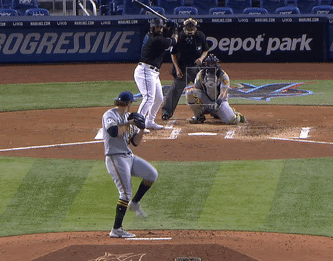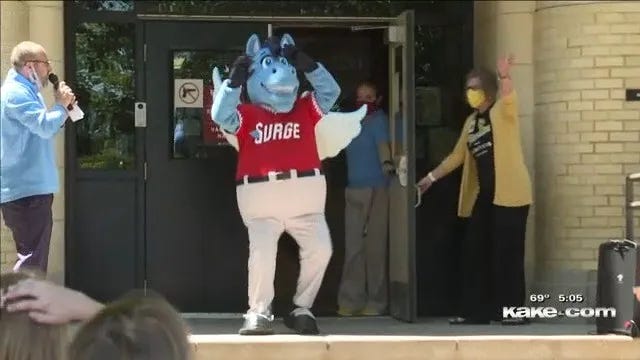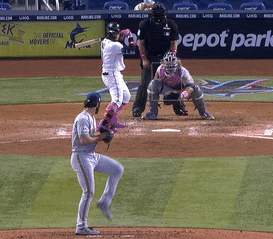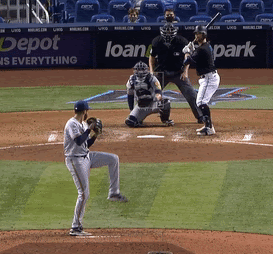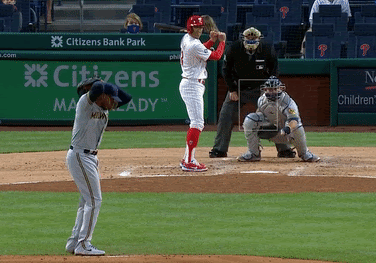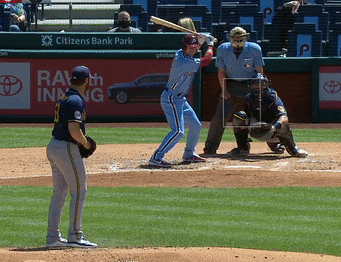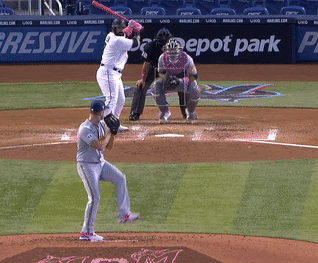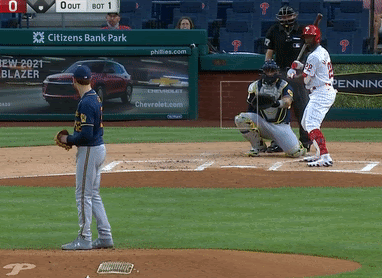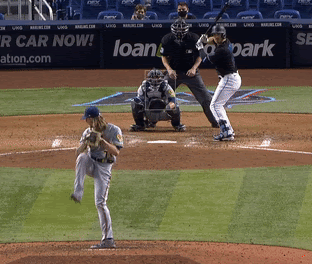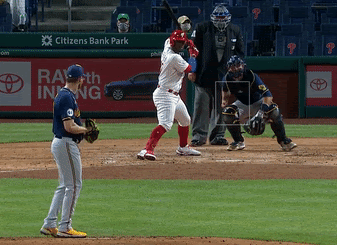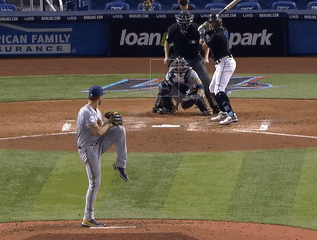What pitchers have caught our eye this season?
We also check in on the minor league season and offer the usual GIFs of filthy pitches
I recently attended a game at American Family Field for the first time in about 18 months and, boy, did it feel good to be back.
So much of the experience felt refreshingly familiar. The music. The crescendo of the crowd as a homer sailed toward the fence. The smells. The checking of the MLB At Bat app to get mad at an ump when I thought, from 400 feet away, that he missed a ball-strike call.
One thing, though, wasn’t all that familiar: the concessions prices.
Perhaps I’m just misremembering because it had been so long since ballpark concourses were in my life (missed u, bb), but…was it always $7 for a brat? $6 for a pretzel and then $2 if I wanted a cup of cheese that doesn’t contain as much cheese as I need to satisfy my desired pretzel-to-cheese ratio? $10 for a tray of nachos? $22 if I wanted the helmet nachos (which, tbh were probably one of the better deals if you split them)?
Look, I know that ballpark food costs more. I’m not knew to this phenomenon. And, now, teams are probably raising prices to make more money off patrons due to limited capacities. I get it.
But am I the only customer off of whom the team would make more by charging, say, $4.50 for a brat and $6 for nachos? Gimme two sausages at that price, for sure, but I won’t spend $7 for one link.
Does this approach make a whole lot of sense? Probably not. But I just want a good bang for my buck, and I know very well that seven smackaroos for a sausage that I will consume in six bites does not satisfy Oscar Martinez, the Rational Consumer.
Let’s converse.
Who’s throwing what?
~Curt
We’re about six weeks into the season, which means that certain statistics are starting to stabilize with a larger sample size while some still have a long way to go in that regard.
One area of metrics from this year that has been fairly stabilized for a while now is pitch selection for individual hurlers. While this stat can vary from year-to-year as pitchers make changes to their arsenals, guys tend to show early in the season how often they will throw each of their pitches.
We all know of the big changes on the Brewers in this area in 2021--Freddy Peralta is no longer Fastball Freddy! JP Feyereisen added a changeup!--but what are some of the less-talked about changes in pitch usage on Milwaukee this year?
Let’s explore.
Josh Hader
Hader has always had a changeup, but in his rise to becoming the best reliever in baseball, it was sort of like half the tools in my toolbox: sure, I possess these tools, but if I never use them do I really possess these tools?
Philosophical pondering aside, Hader threw the change all of five times in 2018 and then just once in 2019. Last season, he threw exclusively four-seams and sliders.
Hader has now thrown 14 changeups this year, good for 7.3 percent of all his pitches. All of those changeups, though, have come since April 21; since then, he has thrown it 11 percent of the time.
He throws the pitch to right-handers only. While it’s not exactly a plus-pitch, it is somewhat effective and he’s been able to keep it out of danger zones. Six of the 14 pitches have gone for balls, three have been called strikes, three swinging strikes, one foul and one hit into play for an out.
Don’t expect Hader to showcase the pitch as a primary out-getter anytime soon, but this is the latest example that he is continuing to evolve and showcase different looks.
Freddy Peralta
Much has been made about Peralta featuring his slider more prominently, so we won’t go into that. But what has also been noticeable is that Peralta is still mixing up his looks from game-to-game, especially early in the season. In the span of eight days, he went from throwing 46 percent sliders to 26 percent, then elevated that percentage again.
The fastball usage has since stabilized a bit, but he has mixed up his off-speed, including a heavy changeup game against the Phillies last time out.
Brett Anderson
Brett Anderson is interesting!
His sinker was his worst pitch by Statcast’s run values in 2020 while his changeup was his best and the rest were all middlingly average. So, naturally, he has raised his sinker usage from 40 percent to 50 and decreased his changeup usage from 24 percent to 17. And the results have been good! Anderson sports a 3.54 ERA (though the 4.82 FIP and 4.81 DRA with a standard deviation of 1.04 indicate there is some Not Fun Regression looming) and the sinker has been a plus pitch by run values.
Brandon Woodruff
Flashback to 2018 when Brandon Woodruff was a young pup making his impact felt on a division-winning team. He flashed a big four-seam fastball and threw it on the first pitch 66 percent of the time. Now, he throws it just one-quarter of the time on the first pitch, instead featuring his sinker on 38 percent of first pitches.
He’s actually throwing his sinker a bit less than he did in 2020, instead flashing a sharp, biting curve with more prominence. In 2020, he would showcase the curve mostly on first pitches before putting it in his back pocket; now it’s his third-most used pitch and effective in any count.
The four-seam is still Woodruff’s go-to putaway pitch, considering he throws it half the time when he gets to two strikes.
Devin Williams
If I had been asked about this one week ago, I would’ve told you that Devin Williams’ fastball was a definite plus pitch in 2020. That wasn’t exactly the case. Sure, it had great velocity and a .192 batting average against and played well off the changeup, but it got hit hard 50 percent of the time and was worth zero runs above average, per Statcast.
It has still been the primary pitch that has gotten Williams into trouble this year, but he’s throwing it less (down to 39 percent from 44 percent). The velocity on it has also dipped. Meanwhile, the changeup is getting more vertical movement and less horizontal break than it did a year ago, prompting me to wonder if Williams tweaked the Airbender grip at all or if he’s throwing multiple different changeups?
Eric Lauer
Lauer was, uh, not good last year, thanks in large part to a four-seam he threw more than half the time that had a .444 batting average against and a changeup that left the park two times out of the 11 times it was thrown.
So Lauer stopped throwing the four-seam as much and instead has mixed in more cutters, a pitch that he has added lots of vertical movement too. The same exact thing can be said of his slider, which now has elite horizontal movement. While it’s not a Corbin Burnes copy because the spin, velocities and movements are all different, Lauer’s trajectory at the moment follows the Burnes Pattern.
Adrian Houser
A year ago, batters hit .333 with a .727 slugging percentage off Houser’s slider, which he thew 12 percent of the time. He has cut that usage in half, which is probably a good thing because it still has a proclivity to get spanked. Houser is now leaning very heavily into his sinker, which continues to be excellent at inducing weak contact and is also his second-best swing-and-miss pitch. He still lacks a consistently good secondary offering, but has been trying to get just that with his curveball, which he’s throwing more of this year.
Down at the farm
~Tom
DOWN AT THE FARM
-- Triple-A St. Paul: On May 5, the Saints won their first game as an affiliate of the Twinkies -- a 10-4 victory over the Omaha Stormchasers. The Saints Twitter account, which is brilliant, by the way, asked for a video board message and a standing ovation at Target Field to commemorate the historic day. They got it.
-- Double-A Wichita: The Wind Surge debuted their new mascot this week. His name? Windy. His species? Terrifying. (Yes, those are wings on his back.)
-- High-A Cedar Rapids: You know this newsletter appreciates weird minor-league team names, but we love great baseball names even more. Trey Cabbage, a fourth-round pick by Minnesota in 2015, went 4-for-4 with 5 RBI and finished a double short of the cycle for the Kernels on May 7. Lettuce remember this performance forever.
-- Low-A Fort Myers: Speaking of terrifying mascots … Oh. My. Word. “Mussel Man” also made his big debut last week.
DOWN AT THE BREWERY
-- Triple-A Nashvillle Sounds: Dee Strange-Gordon, now referred to on this newsletter as The Brother of Nick Gordon, is batting .222 (4 for 18) with one strikeout and one stolen base in four games for the Sounds.
-- Double-A Biloxi Shuckers: What the Shuck? Biloxi plated 12 runs in the sixth inning of their 14-6 win over Birmingham on May 6. Here’s the play-by-play of that inning: BB, BB, K, BB, BB, 1B, FO, BB, BB, BB, BB, BB, BB, HBP, BB, BB, BB, FO. Seventeen batters, one hit and 13 (THIRTEEN!) walks. Ryan Aguilar, Lucas Erceg, Gabriel Garcia and Jesus Lujano all drew two walks in the same inning. RIP to the play-by-play broadcaster.
-- High-A Wisconsin Timber Rattlers: Garrett Mitchell, the Brewers’ 2020 first-round pick, finally made his professional debut and went 3-for-5 with two walks (.714 OBP) in two games before missing time with a minor knee injury. Plz come back.
-- Low-A Carolina Mudcats: Gabe Holt, a seventh-round pick by the Brewers in 2019, tallied seven hits and seven walks while whiffing just once in 20 at-bats to start the season. That’s a beautiful .350/.536/.450 slash line. He also brought a Very Good Boy named Memphis to a game last week, so Holt jumped 50 spots up the RPC Prospect Rankings list.


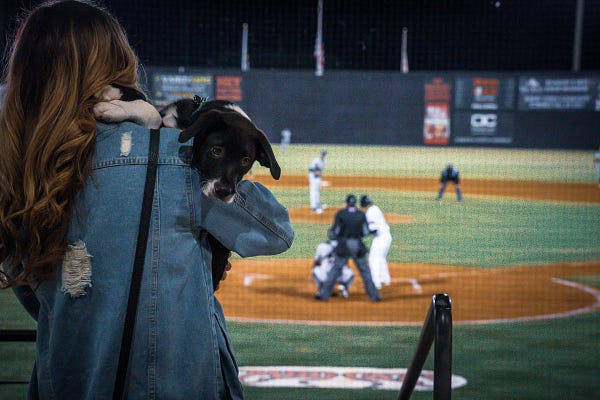
GABE HOLT!
Here, watch some filth
~Curt
